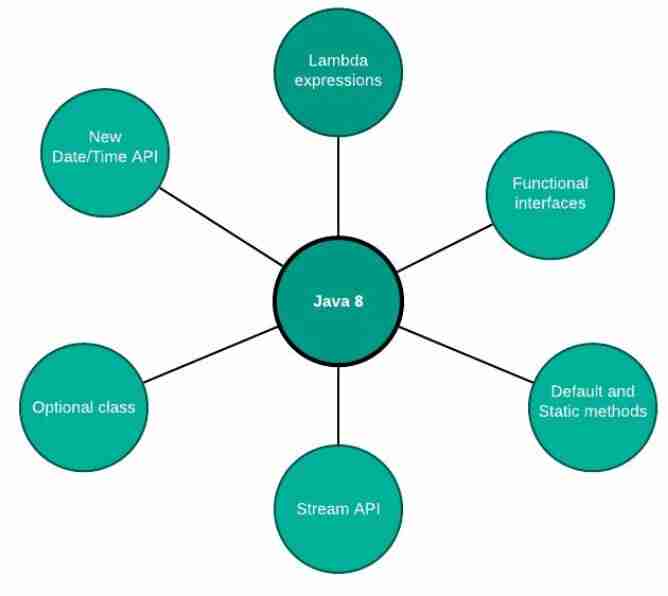
数组是 javascript 中最常用的数据结构之一。它们允许您在单个变量中存储多个值,并附带一组丰富的内置函数,使数据的操作和处理变得简单而高效。在本文中,我们将详细探讨 javascript 数组函数,提供解释、示例和注释来帮助您掌握它们。
javascript 中的数组简介
数组是有序的项目集合,可以保存不同类型的数据,包括数字、字符串、对象,甚至其他数组。
let fruits = ["apple", "banana", "cherry"];
let numbers = [1, 2, 3, 4, 5];
let mixed = [1, "apple", true, {name: "john"}, [1, 2, 3]];
创建数组
可以使用数组文字或数组构造函数创建数组。
let arr1 = [1, 2, 3]; let arr2 = new array(1, 2, 3); console.log(arr1); // output: [1, 2, 3] console.log(arr2); // output: [1, 2, 3]
数组属性
- length:返回数组中元素的数量。
let arr = [1, 2, 3, 4, 5]; console.log(arr.length); // output: 5
数组方法
1. 推()
向数组末尾添加一个或多个元素并返回新的长度。
let arr = [1, 2, 3]; arr.push(4); console.log(arr); // output: [1, 2, 3, 4]
2. 弹出()
从数组中删除最后一个元素并返回该元素。
let arr = [1, 2, 3]; let last = arr.pop(); console.log(arr); // output: [1, 2, 3] console.log(last); // output: 3
3. 移位()
从数组中删除第一个元素并返回该元素。
let arr = [1, 2, 3]; let first = arr.shift(); console.log(arr); // output: [2, 3] console.log(first); // output: 1
4. 取消移位()
将一个或多个元素添加到数组的开头并返回新的长度。
let arr = [2, 3]; arr.unshift(1); console.log(arr); // output: [1, 2, 3]
5. 连接()
合并两个或多个数组并返回一个新数组。
let arr1 = [1, 2]; let arr2 = [3, 4]; let merged = arr1.concat(arr2); console.log(merged); // output: [1, 2, 3, 4]
6. 加入()
将数组的所有元素连接成一个字符串。
let arr = [1, 2, 3];
let str = arr.join("-");
console.log(str); // output: "1-2-3"
7. 反向()
反转数组中元素的顺序。
let arr = [1, 2, 3]; arr.reverse(); console.log(arr); // output: [3, 2, 1]
8. 切片()
将数组的一部分的浅拷贝返回到新的数组对象中。
let arr = [1, 2, 3, 4, 5]; let sliced = arr.slice(1, 3); console.log(sliced); // output: [2, 3]
9. 拼接()
通过删除、替换或添加元素来更改数组的内容。
let arr = [1, 2, 3, 4, 5]; arr.splice(1, 2, "a", "b"); console.log(arr); // output: [1, "a", "b", 4, 5]
10. 排序()
对数组的元素进行就地排序并返回排序后的数组。
let arr = [3, 1, 4, 1, 5, 9]; arr.sort((a, b) => a - b); console.log(arr); // output: [1, 1, 3, 4, 5, 9]
11. 过滤器()
创建一个新数组,其中包含通过所提供函数实现的测试的所有元素。
let arr = [1, 2, 3, 4, 5]; let filtered = arr.filter(x => x > 2); console.log(filtered); // output: [3, 4, 5]
12. 地图()
创建一个新数组,其中包含对调用数组中的每个元素调用所提供函数的结果。
let arr = [1, 2, 3]; let mapped = arr.map(x => x * 2); console.log(mapped); // output: [2, 4, 6]
13. 减少()
对累加器和数组中的每个元素应用函数,将其减少为单个值。
let arr = [1, 2, 3, 4]; let sum = arr.reduce((acc, curr) => acc + curr, 0); console.log(sum); // output: 10
14. 查找()
返回数组中满足所提供的测试函数的第一个元素的值。
let arr = [1, 2, 3, 4, 5]; let found = arr.find(x => x > 3); console.log(found); // output: 4
15. 查找索引()
返回数组中满足所提供的测试函数的第一个元素的索引。
let arr = [1, 2, 3, 4, 5]; let index = arr.findindex(x => x > 3); console.log(index); // output: 3
16. 每个()
测试数组中的所有元素是否通过提供的函数实现的测试。
let arr = [1, 2, 3, 4, 5]; let allbelowten = arr.every(x => x <h4> 17. 一些() </h4> <p>测试数组中至少一个元素是否通过所提供函数实现的测试。<br></p> <pre class="brush:php;toolbar:false">let arr = [1, 2, 3, 4, 5]; let anyabovethree = arr.some(x => x > 3); console.log(anyabovethree); // output: true
18. 包含()
确定数组的条目中是否包含某个值。
let arr = [1, 2, 3, 4, 5]; let hasthree = arr.includes(3); console.log(hasthree); // output: true
19.indexof()
返回在数组中可以找到给定元素的第一个索引,如果不存在则返回-1。
let arr = [1, 2, 3, 4, 5]; let index = arr.indexof(3); console.log(index); // output: 2
20.lastindexof()
返回在数组中可以找到给定元素的最后一个索引,如果不存在则返回 -1。
let arr = [1, 2, 3, 4, 5, 3]; let index = arr.lastindexof(3); console.log(index); // output: 5
21. 平()
创建一个新数组,其中所有子数组元素递归连接到其中,直到指定的深度。
let arr = [1, [2, [3, [4]]]]; let flattened = arr.flat(2); console.log(flattened); // output: [1, 2, 3, [4]]
22. 平面地图()
首先使用映射函数映射每个元素,然后将结果展平为新数组。
let arr = [1, 2, 3]; let flatmapped = arr.flatmap(x => [x, x * 2]); console.log(flatmapped); // output: [1, 2, 2, 4, 3, 6]
23. 来自()
从类似数组或可迭代对象创建一个新的浅复制数组实例。
let str = "hello"; let arr = array.from(str); console.log(arr); // output: ["h", "e", "l", "l", "o"]
24. isarray()
判断传入的值是否是array。
console.log(array.isarray([1, 2, 3])); // output: true
console.log(array.isarray("hello")); // output: false
25. 的()
创建一个
具有可变数量参数的新 array 实例,无论参数的数量或类型如何。
let arr = array.of(1, 2, 3); console.log(arr); // output: [1, 2, 3]
实际例子
示例 1:从数组中删除重复项
let arr = [1, 2, 3, 3, 4, 4, 5]; let unique = [...new set(arr)]; console.log(unique); // output: [1, 2, 3, 4, 5]
示例 2:对数组中的所有值求和
let arr = [1, 2, 3, 4, 5]; let sum = arr.reduce((acc, curr) => acc + curr, 0); console.log(sum); // output: 15
示例 3:展平深度嵌套数组
let arr = [1, [2, [3, [4, [5]]]]]; let flattened = arr.flat(infinity); console.log(flattened); // output: [1, 2, 3, 4, 5]
示例 4:查找数组中的最大值
let arr = [1, 2, 3, 4, 5]; let max = math.max(...arr); console.log(max); // output: 5
示例 5:创建键值对数组
let obj = { a: 1, b: 2, c: 3 };
let entries = Object.entries(obj);
console.log(entries); // Output: [["a", 1], ["b", 2], ["c", 3]]
结论
数组是 javascript 的重要组成部分,提供了一种管理数据集合的强大方法。通过掌握数组函数,您可以轻松执行复杂的数据操作并编写更高效和可读的代码。这个综合指南涵盖了 javascript 中最重要的数组函数,并配有详细的示例和解释。练习使用这些函数并尝试不同的用例,以加深您的理解并提高您的编码技能。
以上就是掌握 JavaScript 数组指南的详细内容,更多请关注php中文网其它相关文章!






